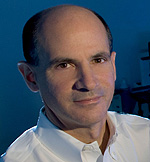Helping stem cells sleep can boost their power to heal
 We are often told that sleep is one of the most important elements of a healthy lifestyle, that it helps in the healing and repair of our heart and blood vessels – among other things.
We are often told that sleep is one of the most important elements of a healthy lifestyle, that it helps in the healing and repair of our heart and blood vessels – among other things.
It turns out that sleep, or something very similar, is equally important for stem cells, helping them retain their power or potency, which is a measure of their effectiveness and efficiency in generating the mature adult cells that are needed to repair damage. Now researchers from Stanford, with a little help from CIRM, have found a way to help stem cells get the necessary rest before kicking in to action. This could pave the way for a whole new approach to treating a variety of genetic disorders such as muscular dystrophy.
